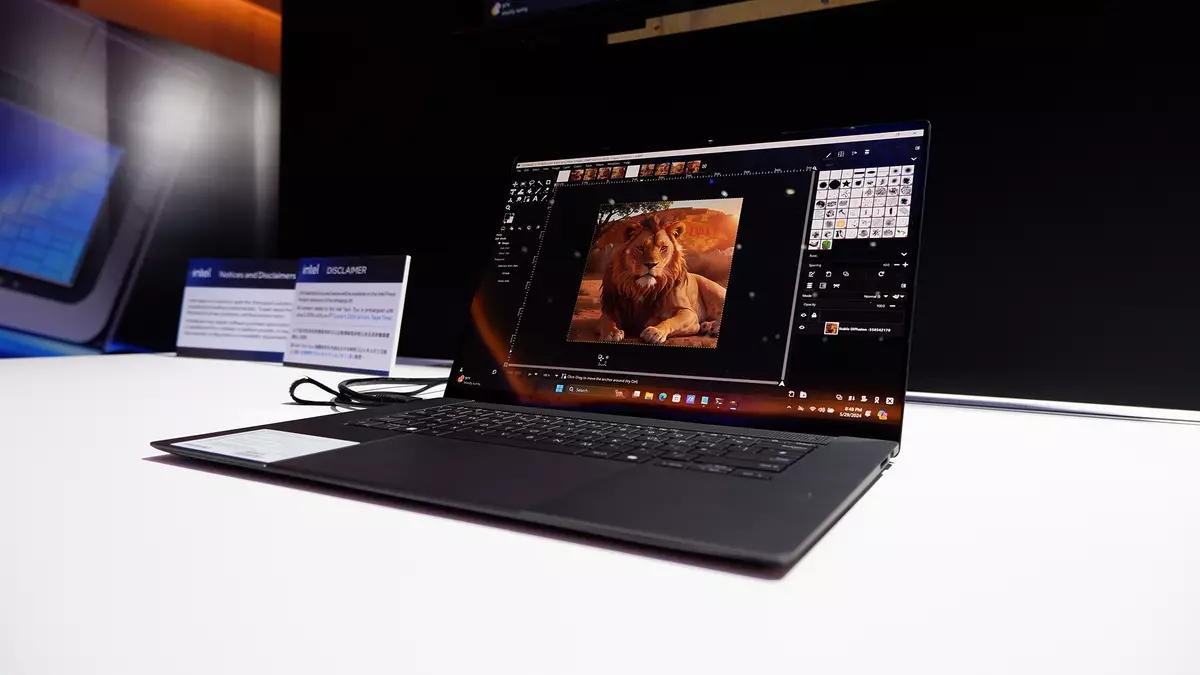Advancements in technology are continuously reshaping the landscape of mobile computing, and Intel’s upcoming Lunar Lake mobile chips are poised to make substantial changes, especially concerning power efficiency and performance. With the promise of being the most efficient x86 processor yet, combined with innovative display technologies, these developments foster excitement among tech enthusiasts and casual users alike.
Intel has consistently pushed the envelope in processor technology, and the Lunar Lake mobile chips appear to represent a new pinnacle in this quest. The company’s bold claim that these chips will be the most efficient x86 processors ever is compelling, especially in a world where battery life is a critical factor for mobile devices. By optimizing power consumption without sacrificing performance, Intel aims to cater to both ordinary users looking for extended on-the-go usage and gamers seeking robust mobile experiences—a challenge that often comes with significant power constraints.
Recent reports highlight that BOE’s latest innovation, the Winning Display 1Hz technology, could couple effectively with Intel’s revised Intelligent Display Technology (IIDT 2.0). The potential claims of up to a 65% reduction in display power consumption are particularly intriguing. This is an ambitious feat that hinges on a combination of advanced algorithms and user interaction considerations. According to the sources, technologies like Autonomous Low Refresh Rate (ALLR) and User-Based Refresh Rate (UBRR) play critical roles in this optimization. Essentially, the display can detect user presence and adapt the refresh rate to conserve energy—altering how we perceive efficiency.
One of the more innovative concepts introduced by IIDT 2.0 is the ability to adjust the refresh rate on different sections of the screen independently. This capability allows users to engage in varied activities simultaneously without incurring excessive power drainage. For instance, while streaming a video on one side of the screen, users can jot down notes on the other with a significantly lower refresh rate. The operational efficiency of this approach is encouraging, as it brings efficiency to multitasking—a common scenario for many users.
However, it’s important to critically examine whether these technological promises hold up in practical situations. The reported extreme of operating at just 1Hz may sound efficient, but raises questions about usability; it is difficult to envision a satisfactory user experience when the refresh rate dips so low. While it may sound beneficial in theory, practical applications must be tested to validate the real-world performance and user satisfaction.
While the technological advancements are certainly impressive, they spark curiosity about the user experience. How frequently will users encounter flickering or sudden alterations in refresh rates that could disrupt their activities? Although the reported enhancements aim to eliminate these concerns, the reality could involve a learning curve as users adapt to dynamic display behaviors. For instance, concerns reminiscent of traditional OLED burn-in protections come to mind, wherein adjustments could occur at inopportune moments, hindering productivity.
Furthermore, the real-world implications of asserting 27 hours of battery life, as claimed by Asus for its Vivobook S 14 leveraging Lunar Lake’s efficiency, warrant skepticism. While benchmarks indicate substantial improvements, actual usage can yield varied results based on multiple factors, including application types, screen brightness, and network conditions.
As the narrative unfolds, it appears that technology is gearing towards a balance between power efficiency and performance. Soon, the interplay of Intel’s Lunar Lake chips and BOE’s display technology may redefine what users perceive as feasible for mobile computing. The foundational goal of extending battery life while enhancing performance encapsulates the future trajectory of the mobile device ecosystem.
As we look forward to these innovations, it will be essential for consumers to remain aware of both the transformative potential of these developments and possible shortcomings. Continuous dialogue in the tech community can help navigate these changes, ensuring that enhancements in technology truly meet user needs without compromising the overall experience.

